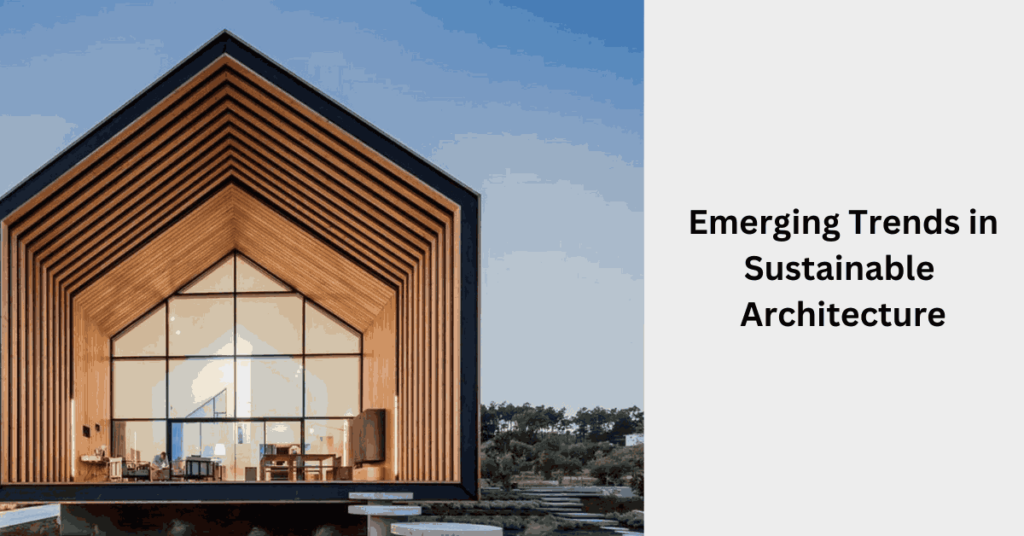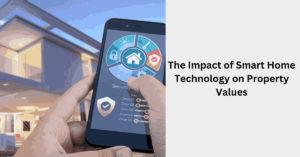Emerging Trends in Sustainable Architecture

Sustainable architecture, a discipline that prioritizes environmentally conscious design and construction practices, is witnessing a dynamic evolution driven by technological advancements, societal shifts, and a growing awareness of environmental issues.
As architects and designers strive to create buildings that harmonize with nature, several emerging trends are reshaping the landscape of sustainable architecture.
Let’s explore these trends that are paving the way for a greener, more sustainable future.
Table of Contents
1. Net-Zero Energy Buildings:
The concept of net-zero energy buildings is gaining momentum, aiming to balance the energy consumed and produced within a structure. Through the integration of renewable energy sources like solar panels, wind turbines, and energy-efficient technologies, buildings aspire to achieve a net-zero energy footprint, significantly reducing reliance on traditional power grids.
2. Biophilic Design:
Biophilic design seeks to reconnect occupants with the natural world by incorporating natural elements, materials, and patterns into the built environment. Living walls, green roofs, and ample use of daylight are integral components of biophilic design. This approach not only enhances the aesthetics of spaces but also contributes to improved well-being and productivity.
3. Circular Economy Principles:
Embracing circular economy principles involves designing buildings with a focus on minimizing waste, reusing materials, and promoting recycling. Architects are increasingly exploring modular construction, using reclaimed materials, and designing structures with disassembly in mind. This approach aims to reduce the environmental impact of construction and promote a sustainable lifecycle for building materials.
4. Smart and Responsive Buildings:
Advancements in technology are enabling the creation of smart and responsive buildings that adapt to environmental conditions. This includes dynamic building facades that adjust to sunlight, energy-efficient HVAC systems controlled by artificial intelligence, and the integration of sensors to optimize energy usage and enhance overall building performance.
5. Passive House Design:
The Passive House standard emphasizes achieving ultra-low energy consumption through meticulous design, high-quality insulation, and airtight construction. These buildings maintain a comfortable interior climate without relying heavily on mechanical heating or cooling systems. Passive house principles are gaining popularity as a benchmark for energy-efficient construction.
6. Resilient and Climate-Adaptive Design:
With the increasing frequency of extreme weather events, architects are incorporating resilient and climate-adaptive design strategies. This involves designing structures that can withstand the impacts of climate change, such as rising sea levels, extreme temperatures, and severe weather events. Climate-adaptive design ensures the long-term sustainability and functionality of buildings in changing environmental conditions.
7. Water-Efficient Design:
Water scarcity is a global concern, prompting architects to prioritize water-efficient design. This includes the implementation of rainwater harvesting systems, greywater recycling, and the use of water-efficient fixtures. Sustainable landscaping practices that reduce water consumption in outdoor spaces are also integral to water-efficient design.
8. Renewable Materials and Low-Carbon Construction:
Architects are increasingly turning to renewable and low-carbon materials to reduce the embodied carbon footprint of buildings. This involves the use of sustainable timber, bamboo, recycled steel, and other materials with minimal environmental impact. Low-carbon construction methods focus on minimizing carbon emissions throughout the entire construction process.
9. Community-Centric Design:
Sustainable architecture is extending its focus beyond individual buildings to community-centric design approaches. This involves creating eco-friendly neighborhoods with shared resources, green spaces, and sustainable infrastructure. The goal is to foster a sense of community while promoting environmental stewardship.
10. Adaptive Reuse and Retrofitting:
Rather than demolishing existing structures, architects are increasingly exploring adaptive reuse and retrofitting to breathe new life into older buildings. Converting disused warehouses into modern office spaces or repurposing historical structures for contemporary use not only preserves cultural heritage but also reduces the environmental impact associated with new construction.
Conclusion:
The evolution of sustainable architecture is marked by a commitment to creating buildings that not only minimize their environmental footprint but actively contribute to a regenerative and resilient future. As these emerging trends gain traction, the collective efforts of architects, designers, and stakeholders are shaping a built environment that aligns harmoniously with the principles of sustainability, fostering a more ecologically balanced and resilient world.
